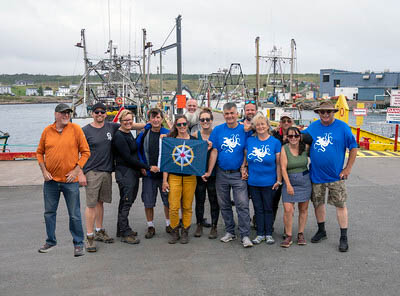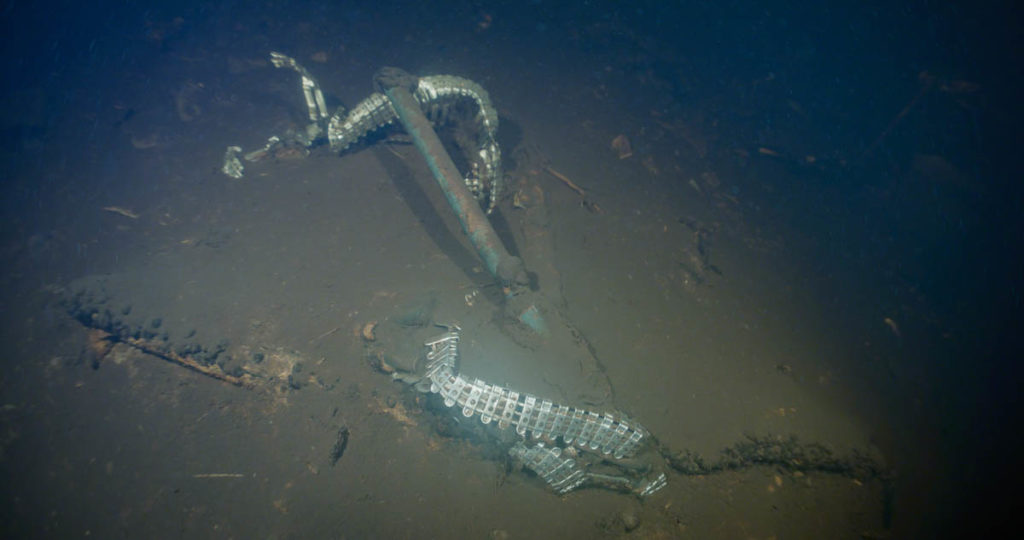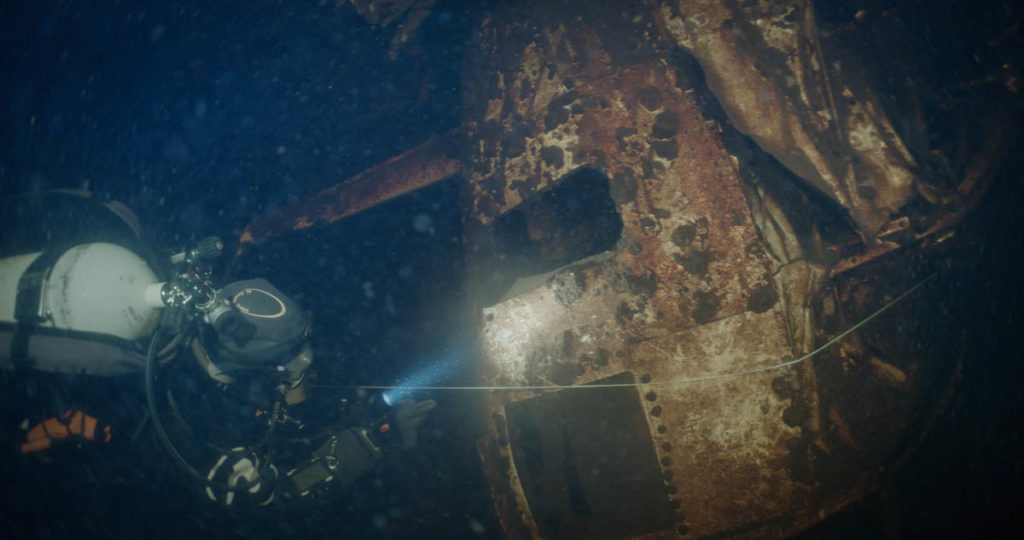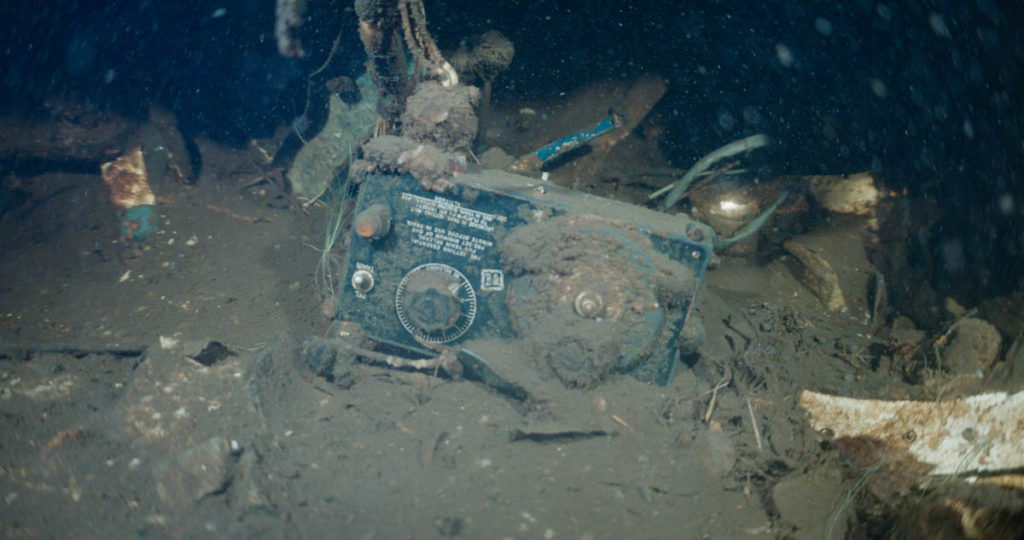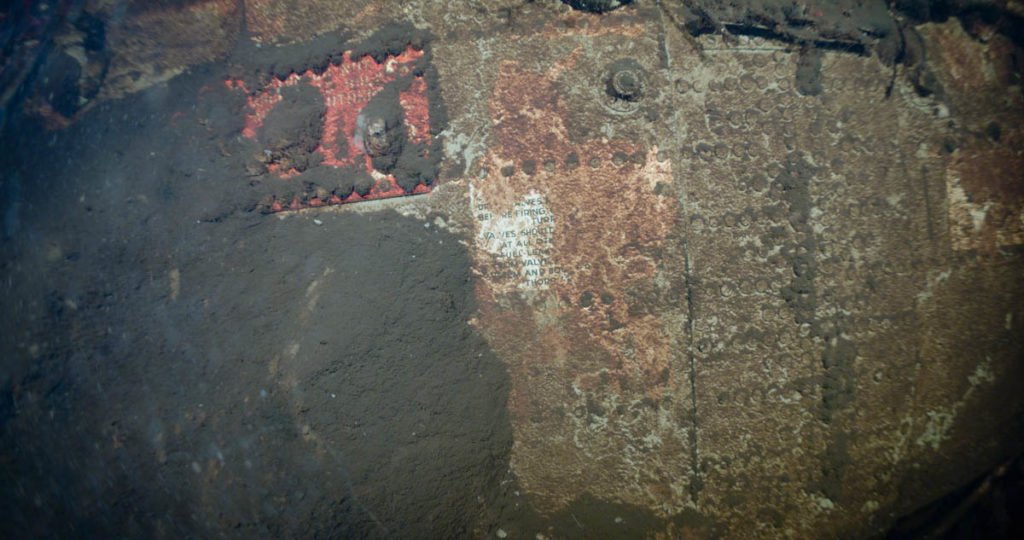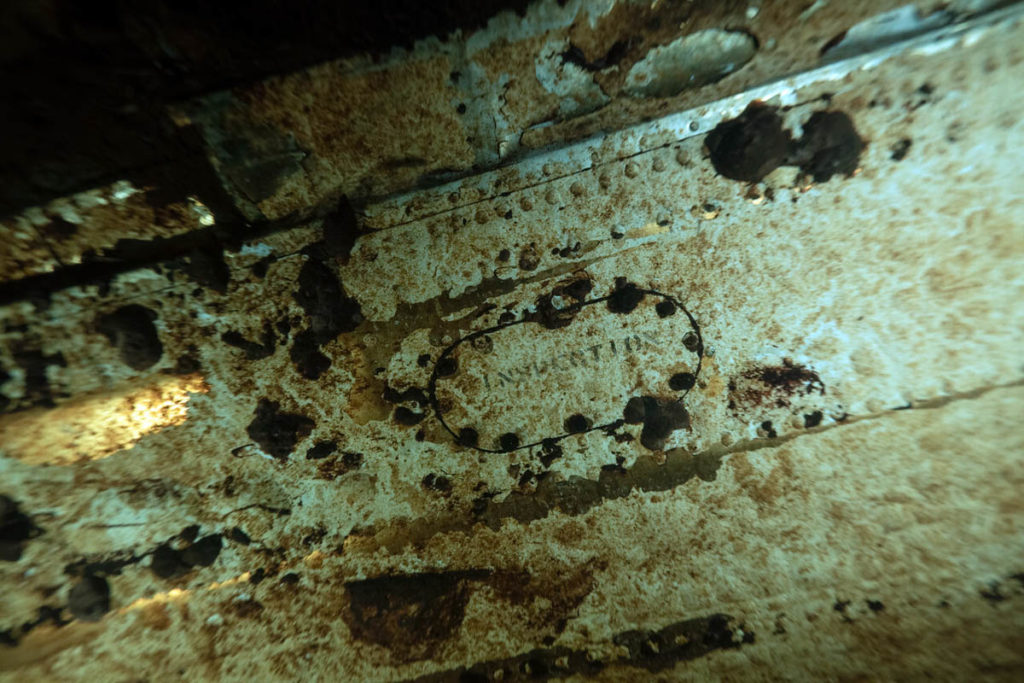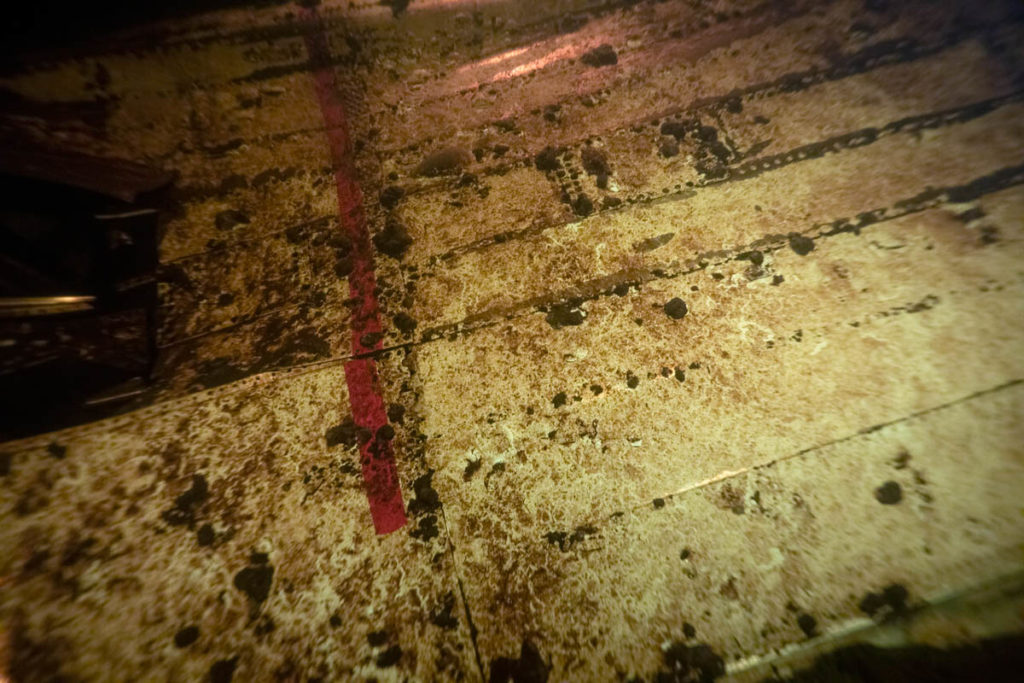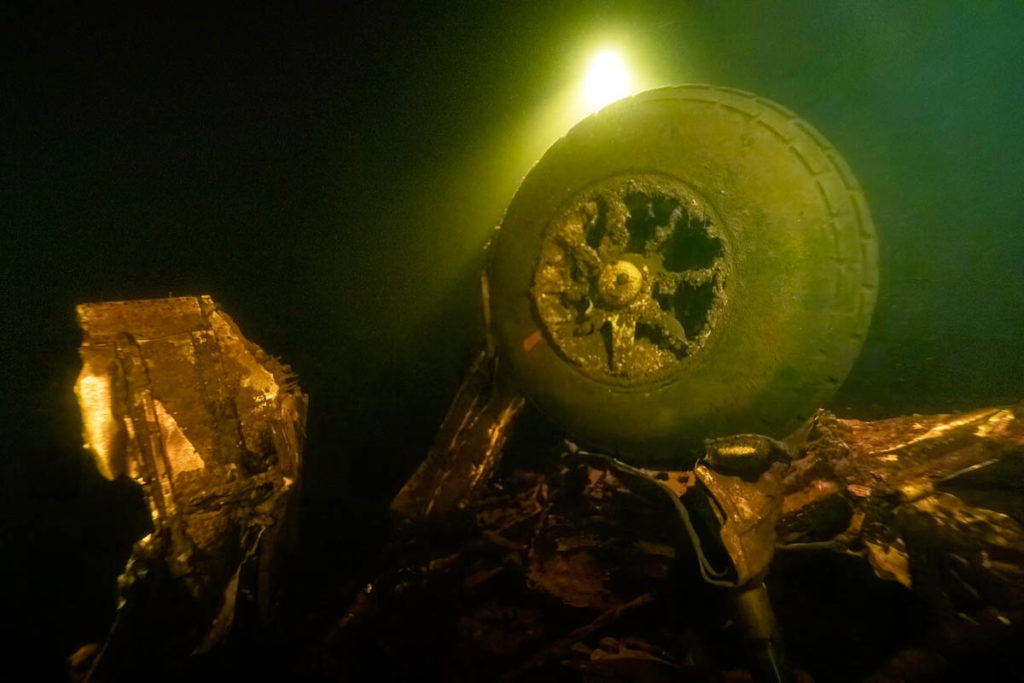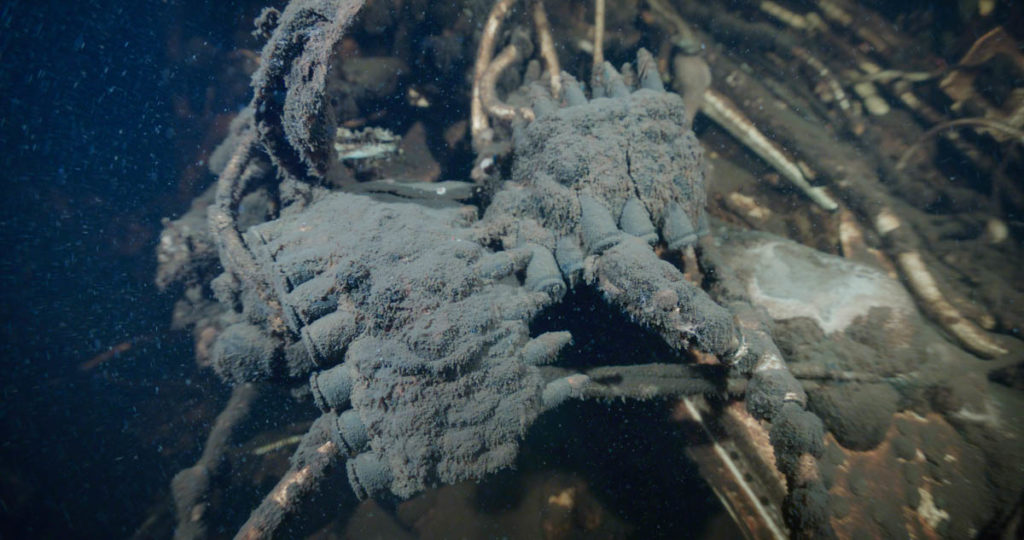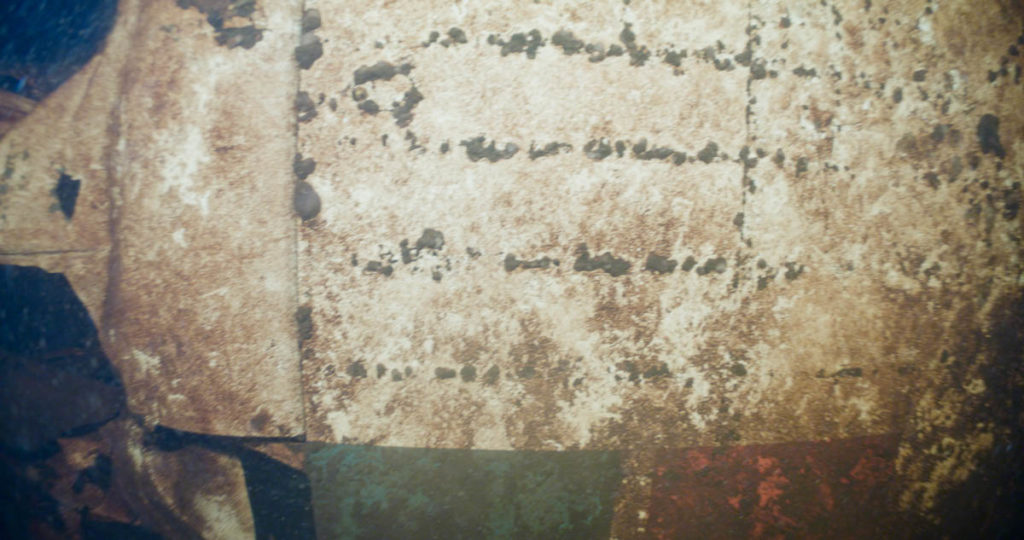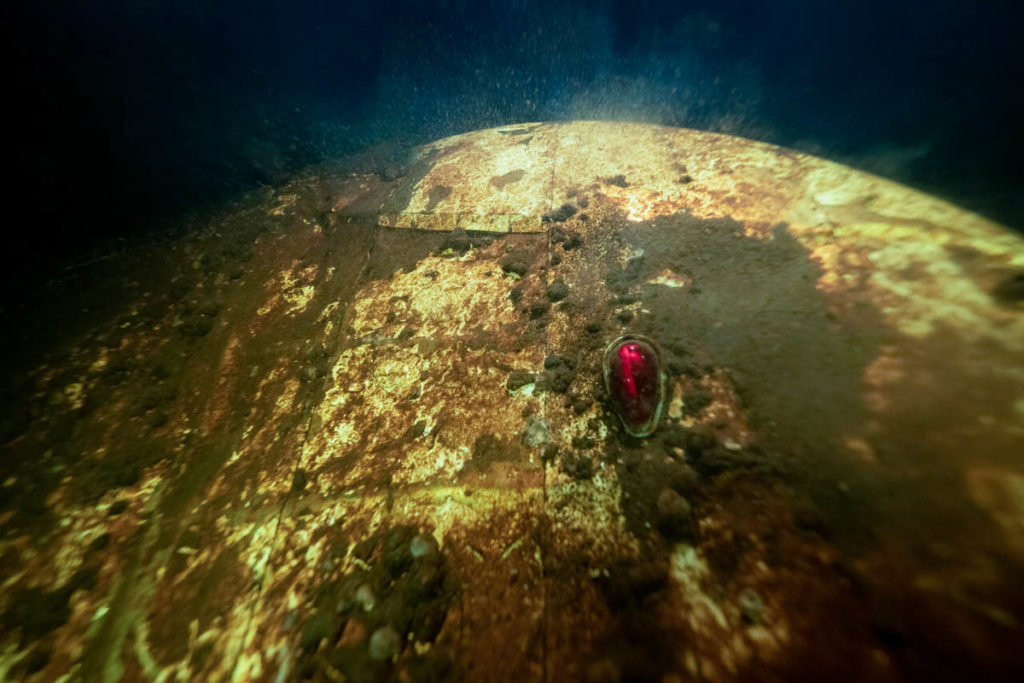An International Team Of Divers Confirm Discovery of Crashed WWII Bomber in Gander Lake, Newfoundland, Canada
(Gander, Newfoundland) – A team of divers supported by the Royal Canadian Geographical Society (RCGS), the Shipwreck Preservation Society of Newfoundland & Labrador and Ocean Quest Adventures have confirmed the discovery of a WWII-era B-24 Liberator Bomber that crashed upon take-off on September 4, 1943, into Gander Lake, Newfoundland with four souls aboard.
Using state-of-the-art underwater imaging equipment, the team of highly experienced divers from Canada, the United States, and France, completed a survey dive on September 5, 2022, in the cold, tannic waters of Gander Lake. The video and images confirmed an earlier 3D sonar scan from July 2022.
For more than nine years Canadian researcher and diver Tony Merkle has been trying to confirm the location of the ill-fated RCAF aircraft. He said, “It is a really special dive for me. I’ve never dived on a plane and since I discovered the site, it means a lot to me to share this part of Newfoundland history.”
Divers found the aircraft oriented upside-down on a steep ledge nearly 50 meters below the surface. Previous search and salvage efforts conducted by military divers at the time of the 1943 crash were abandoned due to extremely dangerous conditions. The aircraft, dubbed “Liberator 589D” has remained undisturbed since.
Images and video are being donated to the Shipwreck Preservation Society of Newfoundland & Labrador for future educational outreach.
The effort to locate the bomber is part of a broader RCGS flagged project, “The Great Island Expedition,” taking the divers to various locations across Newfoundland. The team has been documenting two US Navy World War Two shipwrecks, USS Truxton and USS Pollux in the Burin Peninsula and exploring underwater sites near Gros Morne National Park, and will be conducting dives to commemorate the 80th anniversary of German U-boat attacks at Bell Island in 1942.
Fact Sheet
The Crash
On September 4, 1943, Wing Commander J.M. Young flew RCAF Liberator 589D with Squadron Leader John G. MacKenzie, Flying Officer V.E. Bill, and Leading Aircraftman G. Ward onboard. When an engine failed on takeoff, the aircraft made a slow turn and barrel rolled into Gander Lake taking the four airmen to their death.
Recovery Efforts
At the time of the accident, military hard hat divers found the aircraft resting on a ledge in Gander Lake and attempted to attach cables to the fuselage. While recovering the body of Squadron Leader John G. MacKenzie, the aircraft slipped off the ledge and sunk to a depth beyond the divers’ range. Due to poor visibility, extreme depth and cold water, the military abandoned recovery and salvage efforts after twelve days.
Finding The Plane
A former resident of Gander, Tony Merkle has been searching for the wreck for nearly a decade as a possible target for exploration. Merkle joined the board of the Shipwreck Preservation Society of Newfoundland & Labrador (SPSNL) to obtain assistance from a larger team to move the project ahead. With approximate latitude/longitude coordinates provided by Tony from the RCAF crash report, another SPSNL board member Kirk Regular carried out the multibeam sonar survey in July 2022 that provided initial 3D images and the exact location of the plane. Kirk carried out the survey while working for the School of Ocean Technology at the Marine Institute on a contract to map the bottom of part of Gander Lake. Kirk’s discovery of the plane wreck’s location made diving possible.
Neil Burgess (SPSNL) obtained the necessary archaeology permit from the Provincial Archaeology Office to dive on the plane wreck. The Great Island Expedition was invited to join SPSNL in the exploration dives made possible by support of Ocean Quest Adventures, the RCGS, and all of the Great Island Expedition participants.
Diving for Confirmation
On September 5, 2022, on the 79th anniversary of the crash, a diving team with the Royal Canadian Geographical Society completed six technical dives to photograph and survey the wreck site on a deep ledge between 37 and 48 meters. With water temperature of 5°C and visibility of less than one meter, the dark tea-color water presented challenging conditions. The aircraft is badly damaged and upside down on a precarious ledge. If the plane loses its perch, it may descend over 250 meters to the lake’s bottom.
Expedition Members
Jill Heinerth, Explorer in Residence, Royal Canadian Geographical Society
Rick Stanley, Fellow RCGS, OceanQuest Adventures
Russell Clark, Fellow RCGS, Cinematographer and Editor of Diver Magazine
Debbie Stanley, Ocean Quest Adventures
Maxwel Hohn, Cinematographer
Tiare Boyes, Photographer
Tony Merkle, Researcher/Exploration Diver
Neil Burgess, Newfoundland Shipwreck Preservation Society
Agata Koniecek, Diver
Greg Koniecek, Diver
Luc Michel, Diver
Krystal Janicki, Diver
Tom Howarth, Diver
Chris Broadbent, Diver
Robert McClellan, Media Support/Research




